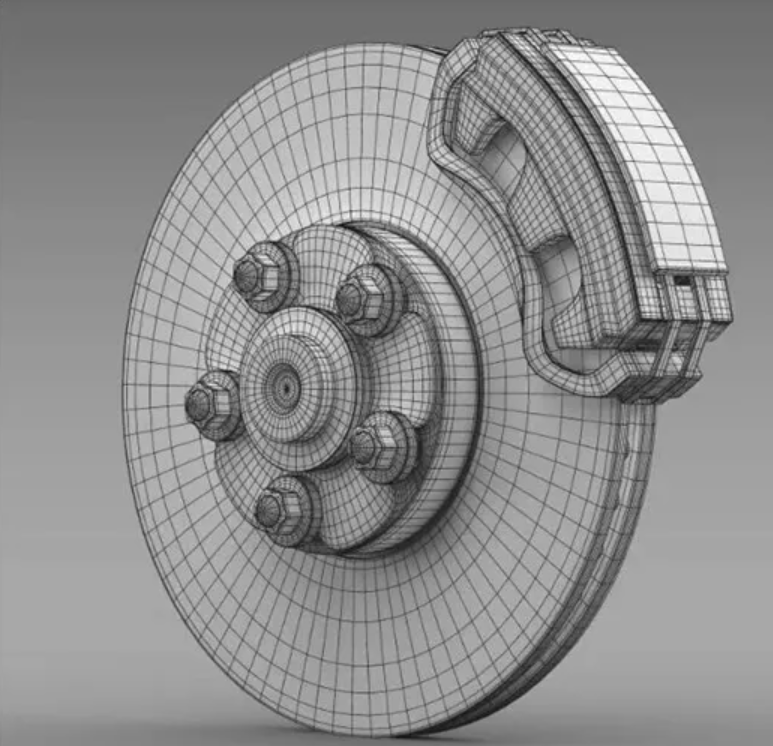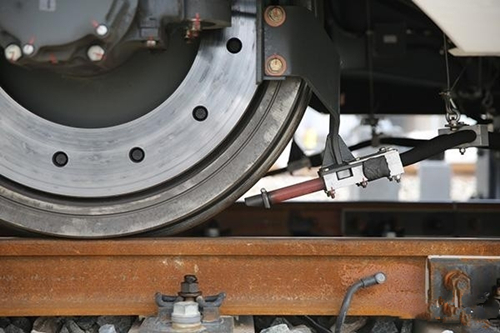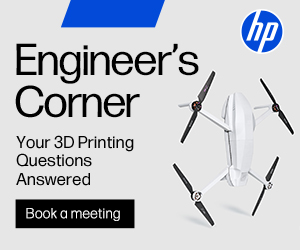EPlus3D 3D Prints Train Brake Disk in 631 Hours
Chinese Powder Bed Fusion company E Plus 3D is on the move. The company at first made printers that were kissing cousins close to some more famous ones from other more established brands. Then they entered the market with a much larger and much taller system meant for aerospace. It is clear that E Plus 3D is on its way to making much more sophisticated printers in line with China’s goals of mastering the most influential and advanced technologies in the world. You can read more about this in our extensive Hug the Panda series.
Now the company´s printers have been used to make a train brake disk. There has been a lot going on around railway and train parts with polymer materials being qualified for use in rail, an alliance around rail 3D printing springing up, and a lot of interest in 3D printing for MRO for rail happening globally. We used to focus on cars and planes, but the trains in trains, planes, and automobiles are now becoming a focus area. The train MRO market globally is worth tens of billions of dollars, so the opportunity is there. But, rail parts are large, heavy, and have to last 20 or 30 years. Rail has its safety and qualification rules as well as its own way of doing business. Rail is not going to be easy, but it could easily be one of the largest verticals in 3D printing if we get it right.
So E Plus 3D’s news is encouraging as well. The company mentions that high speed trains can reach speeds of up to 350 Kph, and they produce huge forces when braking with the brake disk and pads heating up to 900°C. They also say that continual operation in harsh weather and climate is important. A client 3D printed brake disks with the qual laser EP-M650 has a 655 x 655 x 800 mm³ build volume. They are printed with the material 24CrNiMo, which is often used for brake disks. The material has a high ultimate tensile strength and good thermal stability. Other studies point out that traditional manufacturing takes a long time to make these break disks in that material. A series of studies have come out of China looking at this material, and things like fatigue strength, microstructure, and defects, specifically for brake disks. There are a surprising amount of studies on this material, given that the only mentioned application is rail brake disks. We will have to conclude that given China’s world beating high speed rail network, this is just a huge opportunity for the country.
The brake disk measured 648 × 90 mm and was printed with a layer thickness of 50 μm. The total print time was a whopping 631 hours. That’s a 26-day build. That’s a build that you don’t want to go wrong mid way through. And if we think that one through, I’m not entirely sure that there is a business case for this part currently. I mean, it would be like a $100,000 part? But, super cool nonetheless and great that they can print that long without errors. And If this is a business, it will be very good for us. Later on, the team decided to iterate and make a new brake disk design.
The logic for printing a rail brake disk is that some break disks suffer from “microcracks” and are sensitive to water which negatively impacts break performance. Typically powder metallurgy is used to make the disks. Depending on the brake disks, they’re made with different processes, but a popular one is the sintering under pressure molding process. Since we use powder to sinter metals, this makes the resulting parts and needs qualities quite close to what powder bed fusion is outputting already. As a result, 3D printing has a better buy to fly and may produce fewer defects. At the same time, the company says that different shrinkage factors mean that parts may be coarser and less compact than they should be and that this, in turn, degrades mechanical properties. The company hopes that these mechanical properties can be improved while saving weight. They also hope to design the disk so that heat dissipation improves.
Interestingly the company managers print a wear-resistant layer onto the part. They also expect that in the future, it will have a lower cost and be made much faster than with traditional processes. It may even be able to be used for longer as well. I think that this is a super ambitious project. Ultimately we’d need to really improve throughput for this to make economic sense. But, if EPlus3D can chip away at this problem over time, then it will become a very exciting application.
Subscribe to Our Email Newsletter
Stay up-to-date on all the latest news from the 3D printing industry and receive information and offers from third party vendors.
Print Services
Upload your 3D Models and get them printed quickly and efficiently.
You May Also Like
3D Spark Secures $2.2M to Tackle Manufacturing Bottlenecks
German startup 3D Spark has raised two million euros in a seed round. Swedish software investor Triplefair Partners led the round, with Fraunhofer Technologie-Transfer Fonds (FTTF) and Innovationsstarter Fonds Hamburg...
3D Printing Financials: Protolabs Reports 3D Printing Dip, But Metal 3D Orders Grow
Protolabs (NYSE: PRLB) kicked off 2025 with a mixed but steady performance. Revenue remained close to expectations, profits dipped slightly from last year, and the company was profitable despite ongoing...
3D Printing Financials: 2024 Results In, Nano Dimension Gears Up with Markforged and Desktop Metal
Nano Dimension (Nasdaq: NNDM) is going through a major transformation. In just a few weeks, the company has finalized not one, but two major acquisitions: Desktop Metal and Markforged. On...
3D Printing Financials: Medical Drives Materialise’s Q1 2025
Materialise (Nasdaq: MTLS) kicked off 2025 with solid momentum in its medical segment, while its software and manufacturing units slowed down. Revenue rose just over 4% year-over-year to €66.4 million...































